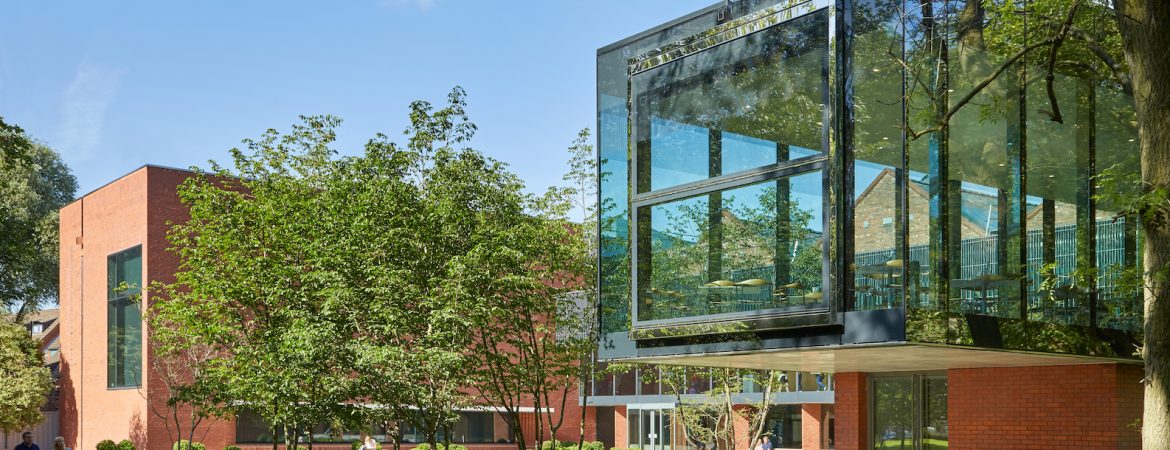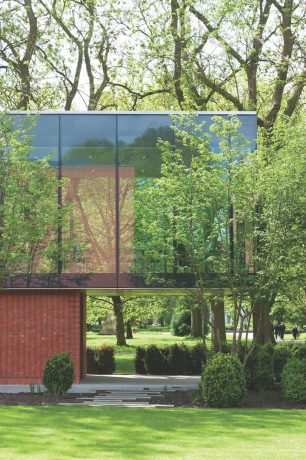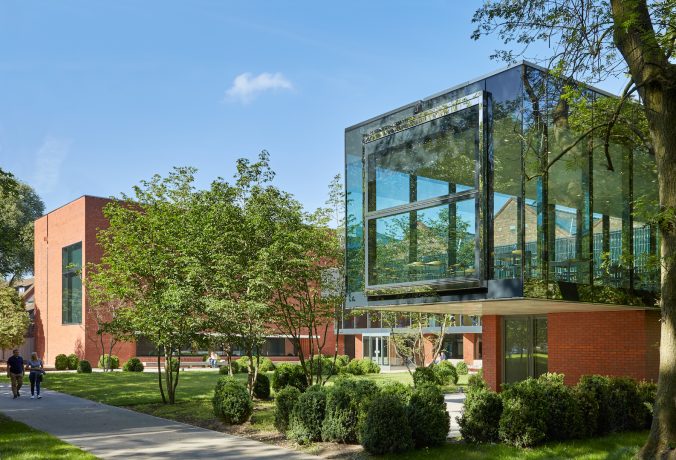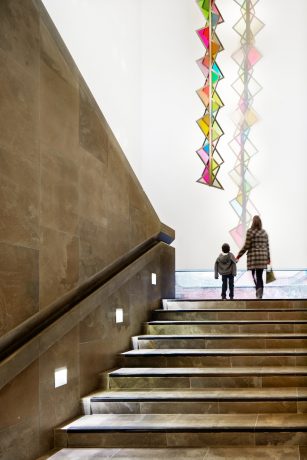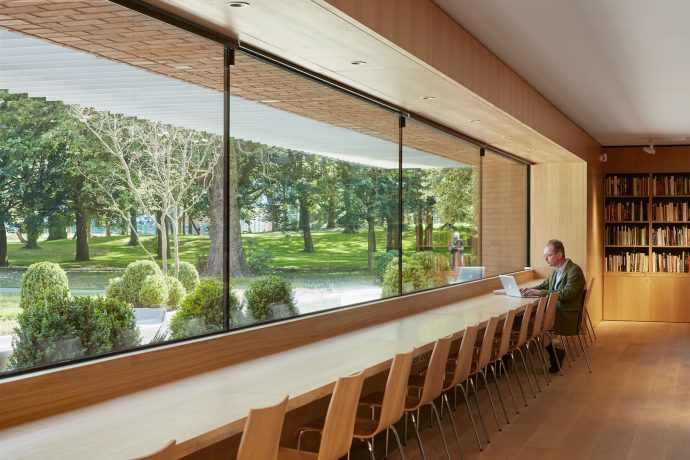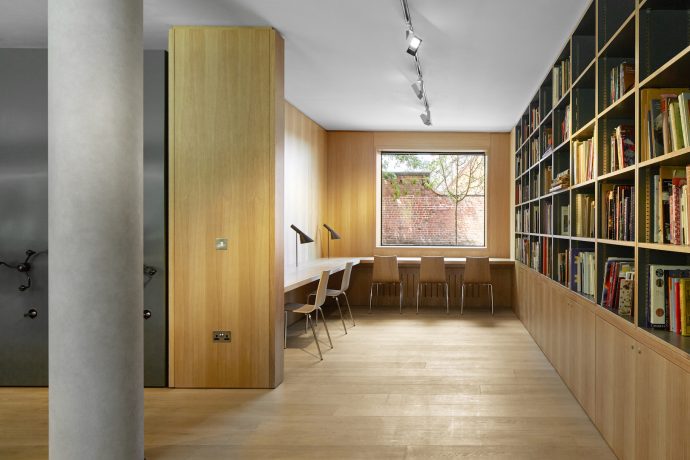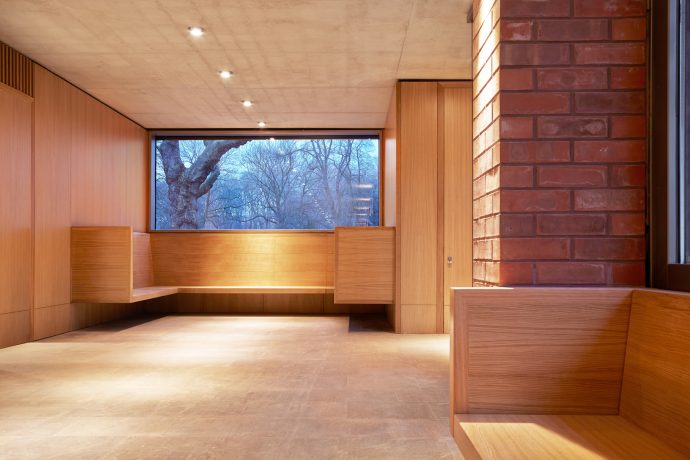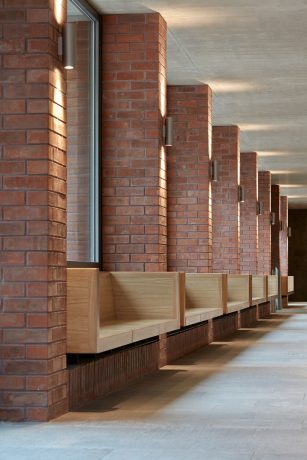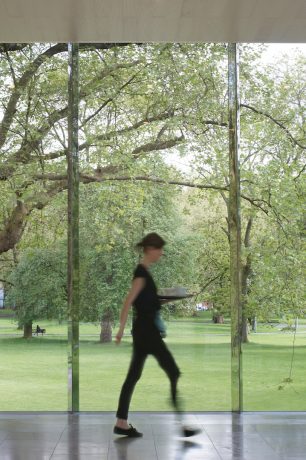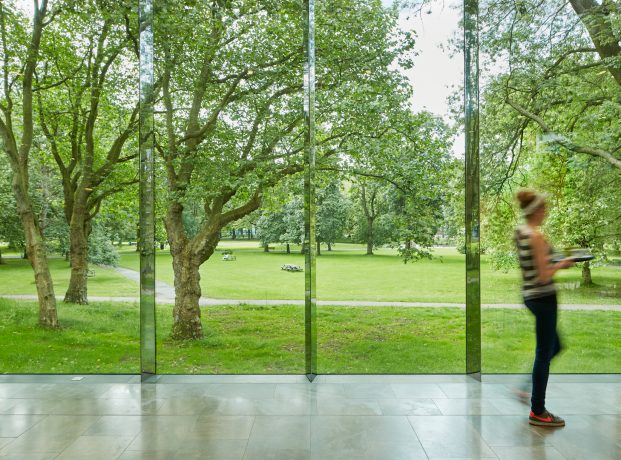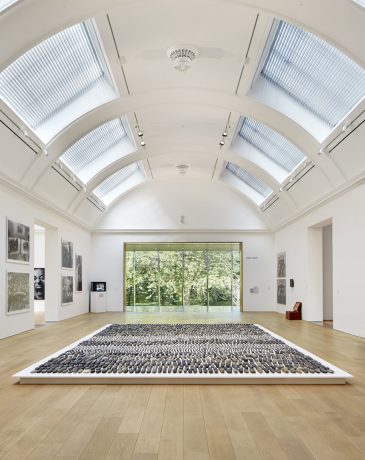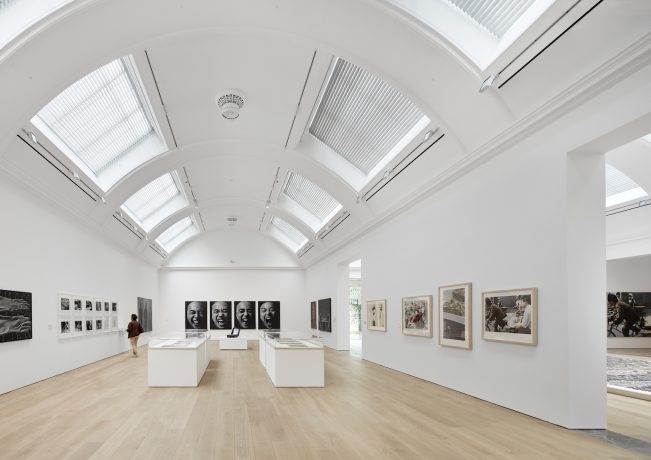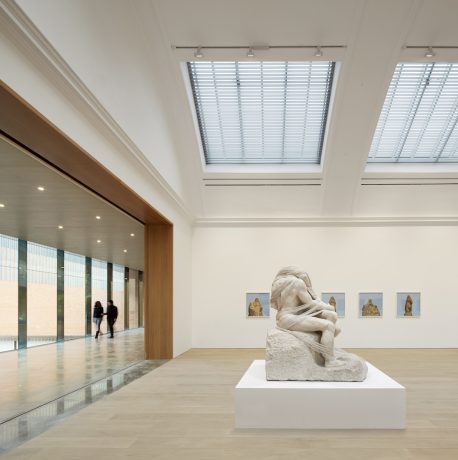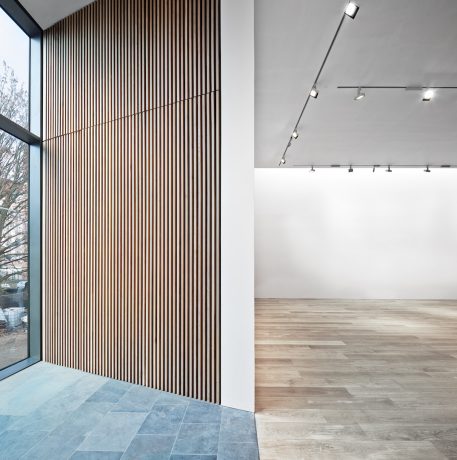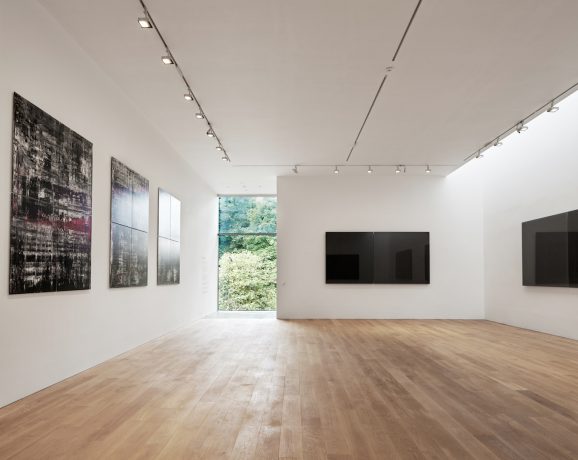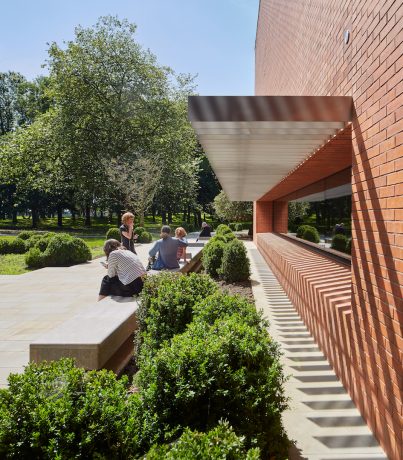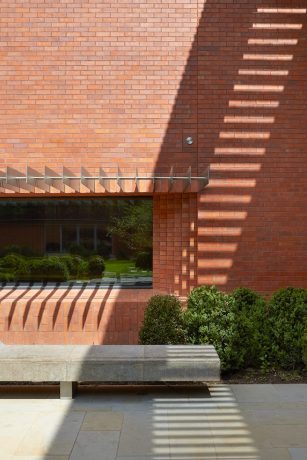The Whitworth, founded in 1889, is situated in the north-east corner of the Whitworth Park in Manchester, right on the edge of the University’s campus. It is also the first English public gallery in the Park.
Over the past 126 years, the Whitworth has went through multiple independent stages of development. Once a private residence, Grove House, the architect Beaumont spent 18 years to transform it into an art gallery for the public. The last stage overseen by him was in 1908, when the front facade of building was completed.
John Bickerdike and Partners began extensively re modelling the interior of the Beaumont building in the 1960’s. The building was transformed into a modern gallery. Another special accent was added to in 1955, when ABK (Ahrends, Burton and Koralek) designed a Sculpture Court at the center of the building, at mezzanine level. The combination of the Victorian/Edwardian shell and the modern interior of the 60’s resulted in the building being listed as Grade II in 1974 (buildings that are of special interest, warranting every effort to preserve them).
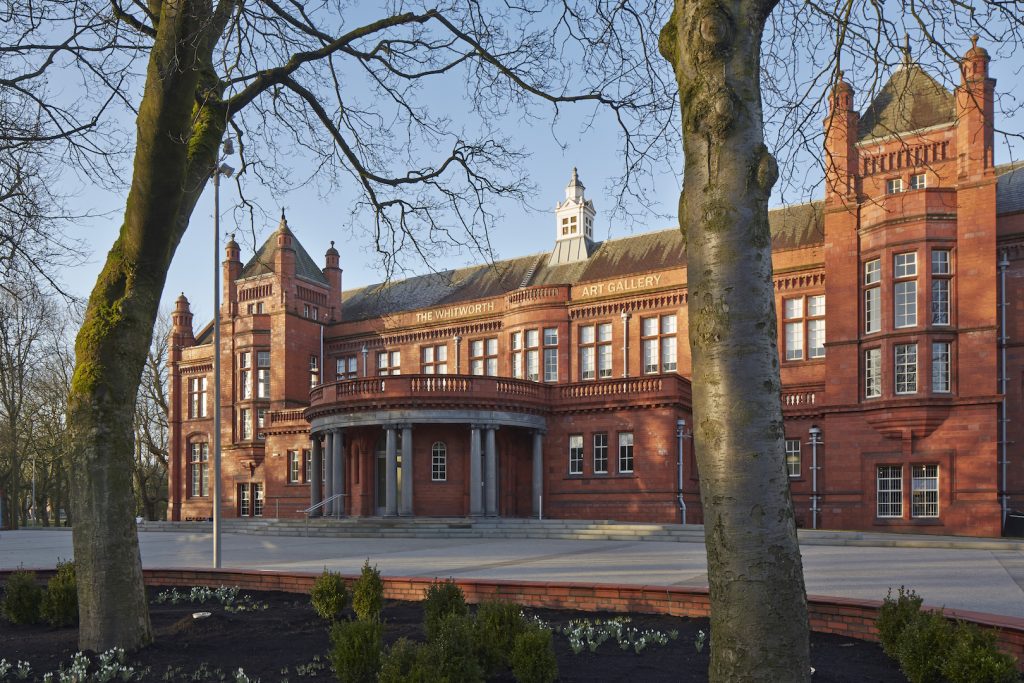
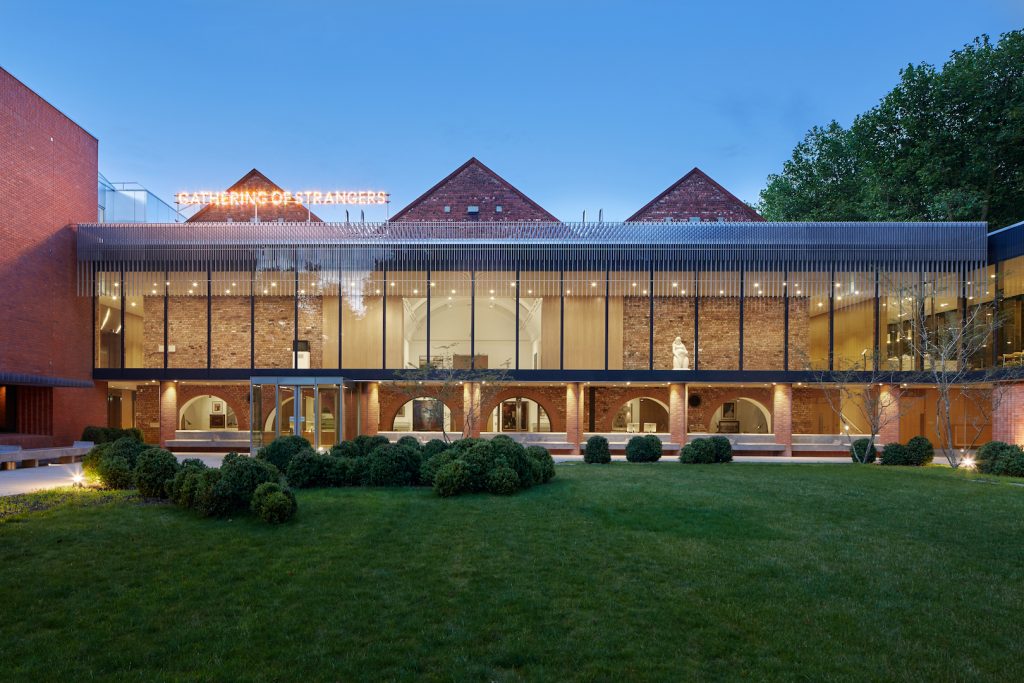
The Whitworth’s facade of 1908, facing Oxford Road to the east, and other elements of the north and south elevations were designed with great attention to details. Unfortunately the west facade of the building, which faced the park, was not as well thought through, which led to this part of the building being somewhat disregarded and provided a canvas for graffiti artists in the park. Recently, the Whitworth underwent a major renovation that included two gallery wings being added by London-based architecture studio MUMA.
The extensions were added to the part of the gallery which is situated in Whitworth Park. You can imagine what a beautiful combination ended up being created by placing one stainless still and one glass wing against this 19th century building, part of the University of Manchester. The gallery was doubled in size with the addition of the two wings, creating space for storage and learning spaces.
Back-of-house facilities were created in the north wing, such as art handling facilities and a loading bay, as well as much needed lifts to deliver art to the three levels of the existing gallery building.
A beautiful glazed cafe with its terrace overlooking the park is linked to through a glass promenade, which has become a space for large-scale sculptures and landscape art. You can imagine how essential and beautiful the natural light is for these pieces of art. The gallery allows the art works to really interact with the natural surrounding and provides interesting visual connections within the building inviting in the landscape and connecting it with the building’s interior.
The landscape architect, Sarah Price, designed two spaces of landscaping which she named the Orchard Garden and Art Garden. Inaugurated this June, Art Garden displays more than 90 sculptures and offers various walks, workshops and festivals to visitors.
Three barrel-vaulted ceilings from the existing building were renovated over the exhibition spaces, and an Edwardian staircase was reopened connecting the grand all and the first floor of the gallery. A visual connection between the connecting gallery and the new exhibition space is created through a large central window in the existing building. In 2014, the Whitworth was reopened to the public, displaying pieces from the gallery’s permanent collection which is made up of over 55,000 contemporary and historical works (paintings, sculptures, drawings..). An exhibition by Cornelia Parker, British installation artist and sculptor, was also on view.
Grants from the Heritage Lottery Fund and the University of Manchester helped make the renovation come to life, with additional support by the Arts Council England to enable to to improve the entrance and creating a sculpture terrace. It is no wonder that in 2015 the Whitworth was awarded the Museum of the Year prize by the Art Fund, the largest arts award in Britain and the biggest museum prize in the world. It praised the museum to have best demonstrated excellence, innovation and imagination. We extend our heartfelt congratulations to the museum team and look forward to many more exciting news from the Whitworth. In the meantime we encourage you to explore this incredible art venue!
